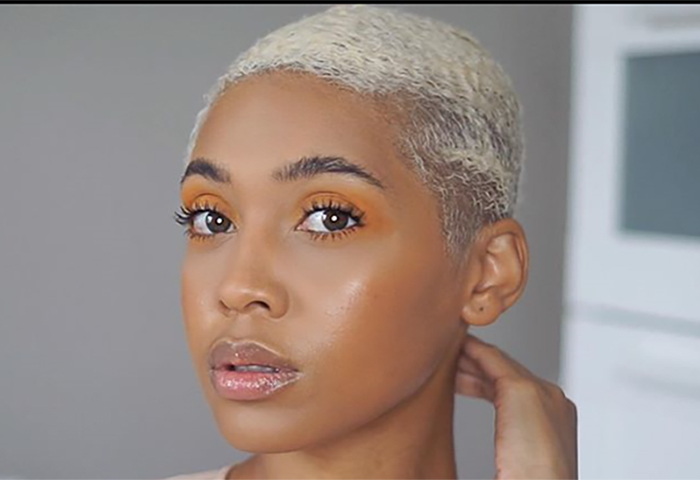
Image source: @jmayoxo
Over-bleaching your hair can easily send you into full-on panic mode. Worst case scenario: your hair literally falls off into your hands. Best case scenario: your hair looks and feels like Scarecrow from Wizard of Oz.
The bad news is that there’s no quick, easy way to repair your hair after bleach. The good news is that with commitment, patience and the right products, you can get your old head of hair back.
Here are a few tips that hair experts use to restore damaged hair after bleach.
Apply an Intensive Protein Treatment
Bleach damages your hair by causing the hair strands to weaken and eventually break. Those hair strands are made of protein. Therefore, you can gradually strengthen your strands by applying protein treatments.
If you have the means, it’s a great idea to go to a salon, where a stylist can give you a professional-strength protein treatment. If not, though, there are some excellent at-home protein treatments available, like the Aphogee Two-Step Protein Treatment. Use this treatment about twice a month to repair your curls, and don’t forget to moisturize after each application.
Get Rid of the Damage
If you do go to a salon, one of the first steps they’ll likely take is to chop off as much as the visibly damaged hair as possible. Hopefully, that’s not too much of your hair! It’s important to remove the most damaged areas of your hair, because split, broken strands only get worse over time. Moreover, damaged hair is hard to comb and style, which can cause collateral damage when it’s time to detangle.
If you’re brave, you can do this at home, too; ask a friend for help if you’re worried about hard-to-reach areas.
Make Hair Masks Your Best Friend
Repeat after me: “Hair masks are my lord and savior.”
Seriously, you may have loved hair masks before, but regular hair masks are an absolute necessity for damaged, bleached hair. They balance, restore, and repair all at the same time. Many naturals with damaged hair swear by the It’s a 10! Miracle Hair Mask, which is rich in oils and collagen (though it’s not Curly Girl method friendly”>. It’s pricey, but its name doesn’t lie – it works miracles.
Whichever hair masks you choose, apply one at least once a week.
Try Olaplex
Aside from protein treatments and hair masks, there’s a third restorative treatment that can help damaged hair: Olaplex. Olaplex is commonly used in salons to help strengthen and reconstruct hair strands during the bleaching process. It’s also very helpful for repairing damaged hair. It works by restoring the bonds that break under harsh chemical treatments. Honestly, the science of Olaplex is all a bit confusing, but you can read more about how the treatments work here.
A salon can give you a full, three-step Olaplex treatment, or you can buy all three steps and do them at home yourself. Warning: It’s pretty $$$.
Wash Less Often
Since hydration is so important for hair repair, it’s a good idea to adjust your wash day routine a bit. You might find that heavier, more moisturizing products do better for your hair during this time. Switch out your shampoo for a co-wash or cleansing conditioner. Swap your leave-in conditioner for a cream or butter.
Along the same lines, try washing your hair less often so your hair can retain as much of its natural moisture as possible.
Avoid Heat and Color
Unfortunately, you’ll need to steer away from the blow dryer, the flat iron, and the curling iron for a few months until your hair can handle the heat. Also, this should go without saying, but you should avoid touching your hair with any type of chemical processor, including bleach and dye, without consulting with a professional stylist.
Get Regular Trims
Lastly, make sure to stay on top of your hair trims. You don’t need to go to a professional to do this. Instead, just dust your ends once a month to remove any damaged or split ends.
What are your go-to methods for repairing bleached hair? Share with us in the comments below!
